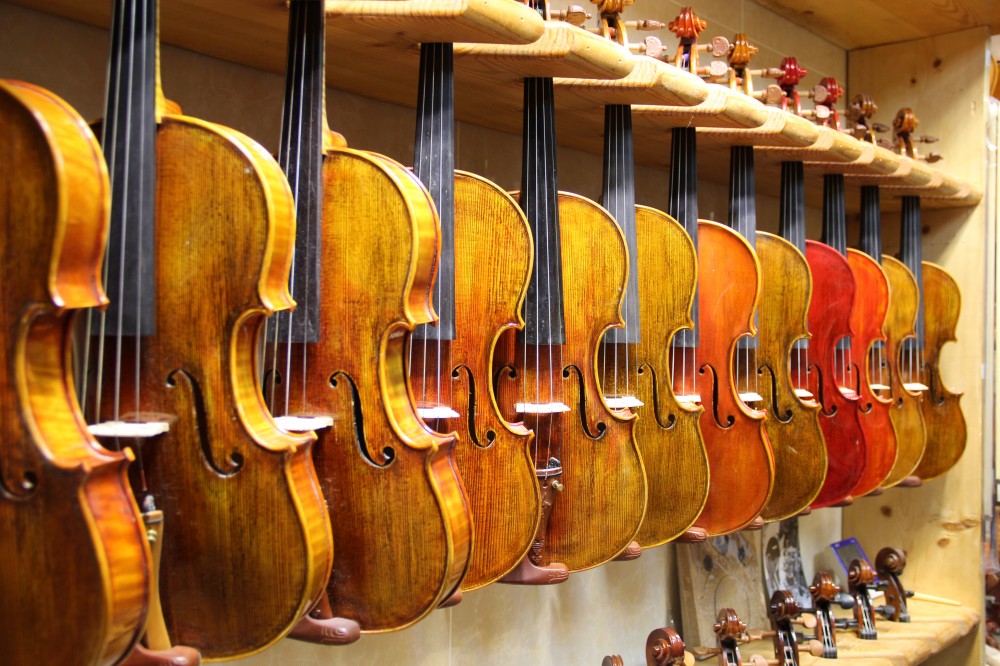Editor: Gienne Lee Reporters:Ian Cheng, Vivian Ng, Matthew Leung
Local violin-makers labour for love in face of stiff competition
Rows of violins hang on the walls of a cozy violin, softly illuminated by the warm spotlights. Behind a small door in the middle of the shop, a violin maker is busy planing down pieces of wood.
Ngai Tin-wai, in his 50s, is a local violin maker who started learning the from a master in mainland China more than 20 years ago. He opened his workshop in 1993 and has been making violins to sell since then.
Ngai is so obsessed with violins that he spent years refining the design of his instruments so he could improve their sound quality. After numerous attempts, he finally made a violin with the sound quality that he is satisfied with. On average, it takes around three years from placing an order to receiving a customized hand-made violin. Nevertheless, there is no shortage of customers who are willing to wait for a violin that meets their specifications.
Unlike Ngai, Timothy Spencer learnt to hand-craft violins at a formal violin making school in England. Spencer had started off as a furniture maker but turned his hand to violins because he finds them unique and beautiful to make.
Spencer says the skills involved in violin making are more challenging than it seems. “It is one of the most precise forms of wood work that you can do.” Spencer explains that hand-made violins are often made from better materials and produced better sound. He says customers benefit from the experience of a violin maker.
Spencer does not solely rely on just selling violins for a living, as it can take as long as two years to sell a hand-made violin. Like most of the violin makers in his native Britain, he also repairs violins.
Despite the skill and care that goes into making a violin by hand, professional violinist, Andrew Choi Wai-wah says most ordinary players will find it hard to tell a hand-made instrument from a factory-produced one.
Choi says are mainly three types of violins. Firstly, factory made violins; secondly, hand-made violins made by one individual violin maker and thirdly, hand-made violins assembled from different parts crafted by different makers.
Choi says only very experienced violinists can identify a hand-made instrument from a mass-produced one.
Henry, a local violin seller who does not want to disclose his full name, is pessimistic about the local violin making industry. He says local makers face fierce competition from those in the Mainland and cannot match the prestigious reputation of European violins. Yet, when deciding on their purchases, local customers place price and reputations high on their list of considerations.
However, Henry still sees the value of hand-made violins produced solely by one carpenter. He believes these instruments have refined design and structure and therefore better sound quality. This may be why local violin makers still have a market for their work.










































